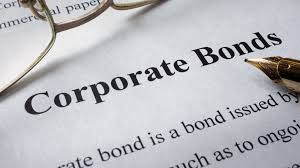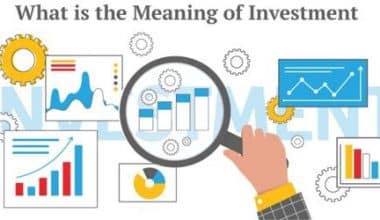Some bond investors may find bonds perplexing. You are aware that you need to diversify your portfolio by including fixed-income investments, but you may find it difficult to navigate the bond market. One simple solution is to purchase an index fund that tracks the whole bond market. In this article, you will get to know if bonds are a good investment right now and also whether they are affected during inflation. Let’s dive!!!
Are Bonds a Good Investment in 2023?
When you invest in a fund that represents the entirety of the U.S. bond market, you have exposure to the entire bond market. You can invest in a wide range of fixed-income securities (including U. (Alprazolam) S. Treasury bonds, agency bonds, corporate bonds, and money market accounts) through a single fund with an expense ratio of 15 basis points or less.
A bond allocation is essential for your retirement and taxable investment plans. A total bond market fund is an excellent addition to any portfolio, whether it be a simple two-fund or three-fund setup, or something more elaborate. Below are the 2023 investment bonds to make:
#1. T. Rowe Price QM U.S. Bond Index Fund (PBDIX)
Among the funds that follow the Bloomberg Barclays U.S. Aggregate Bond Index on our list, the T. Rowe Price QM U.S. Bond Index Fund has one of the strongest five-year returns. The prospectus for this product warns that, “compared to a fund that strictly adopts a passive indexing strategy, the returns of the fund may diverge from the returns of its benchmark” if its managers actively seek out “incremental returns above the index.” This helps to account for both its marginally better performance and its higher expense ratio of 25 basis points.
#2. Vanguard Total Bond Market Index Fund (VBTLX)
Bloomberg also releases a number of sub-indices that significantly alter the benchmark U.S. Aggregate Bond Index. Vanguard utilizes one of these indices in its total bond index fund; it is a float-adjusted index. Since the Federal Reserve began purchasing bonds under its quantitative easing program in 2009, this sub-index has been part of Bloomberg’s offerings. In the float-adjusted benchmark, Federal Reserve securities are not included. This sub-index has a smaller weighting in government bonds and a slightly larger weighting in corporate bonds than the primary index, reflecting the Federal Reserve’s tendency to purchase these latter. The fund has a minimum investment of $3,000 but only a 5% management fee.
#3. Fidelity U.S. Bond Index Fund (FXNAX)
The Bloomberg Barclays U.S. Aggregate Bond Index is the benchmark for most total U.S. bond index funds. It’s a fact that FXNAX is similar to the majority of the bond funds on our recommended list. The index tracks the market for high-quality, fixed-rate, taxable bonds denominated in U.S. dollars. The index includes both government-related bonds (such as Treasury bonds) and corporate bonds (of a high enough quality to be considered investment grade). No minimum investment is needed, and the fund’s fee is a low 2.5 basis points.
#4. Schwab U.S. Aggregate Bond Index Fund (SWAGX)
The Schwab U.S. Aggregate Bond Index Fund charges only four basis points to follow the Bloomberg Barclays U.S. Aggregate Index. In addition to having a yield of 1.94% during the prior twelve months with no minimum investment, there is also no minimum investment requirement. There is currently no way to calculate a five-year return on an investment that began in 2017.
The majority of the fund’s assets will be invested in securities that are part of the fund’s benchmark index; the remaining 10% will be invested in highly liquid securities that are not part of the index. These may include short-term government or agency debt, other funds, and even futures contracts.
#5. Northern Trust Bond Index (NOBOX)
You’ll need to pay 15 basis points annually to invest in the Northern Trust Bond Index Fund. It has a trailing 12-month yield of 2.09% and a 5-year performance of 2.80%. By Morningstar’s count, it’s the only fund on our shortlist that doesn’t have any cash on hand.
Are Bonds a Good Investment Right Now?
If something becomes significantly less expensive, you should seriously consider purchasing it. The bonds have matured. The yield-starved investor now has the option of purchasing the safest asset in the world, US Treasuries. Perhaps now is the right time to start bonds investment, so long as you save enough money to take advantage of any more rate drops. The only unknown is when to buy and what maturities to prioritize.
Importantly, the Federal Reserve is involved, and inflation is the main factor for Fed policy. Since the Fed was slow to realize that inflation is here to stay, it is determined to avoid making the same mistake twice. Inflation will be extinguished like a fire by a herd of hippos, and the market is slowly coming to realize this fact.
The yield on the 2-year Treasury note closed the day at 3.74 percent, an all-time high since 2007. As a result, there was an interesting disconnect with the 10-year note yield, which was also up sharply to end at 3.42%. As a result, 32 basis points have been added to the 2-10 yield curve. An even more intriguing discrepancy is that while the 2-year yield has surged to a new all-time high, it is now 29 basis points lower than the 10-year yield’s record high, which was set on June 14.
Strategies Of Having a Good Investment of Bonds Right Away
Several perspectives can be taken into account here. A common strategy is to mirror the Fed’s short-term rate moves in the hopes of profiting from the subsequent rate hikes. Obviously, this will be effective, at least temporarily. The Fed will eventually cease permitting very short maturities to fall back, which is the only drawback. In that instance, securing relatively high rates at the moment may justify a shift toward holding a position with a longer time to maturity.
Therefore, a number of tactics are in play for a good investment bonds right away:
- Bond ladders can be structured with maturities ranging from as short as two or three months and as long as two years, taking advantage of the immediate opportunities available in the shorter maturities.
- Lock in rates that are pretty darn low for the next five or ten years. I would be looking out 5 years at most.
- Merge the two tactics into one.
- You can achieve the desired return on investment by purchasing a bond with the desired term to maturity.
- You should invest half of your available funds first in case a better offer comes along. This is the strategy I’ve been using so far.
Are Bonds a Good Investment During Inflation?
When prices of goods and services rise faster than wages, customers experience a loss of purchasing power. A portion of an investor’s investment portfolio in bonds should be reallocated to assets that grow in value at a faster rate than inflation. There are several types of assets that usually do well during inflationary times, and they are as follows:
- Products derived from commodities like gold, oil, and soybeans should increase in price as well.
- The interest rates on inflation-indexed bonds and Treasury Inflation-Protected Securities (TIPS) rise in tandem with the prices of bonds for investment.
- Stocks of companies that produce necessities for everyday life tend to fare well because of the fact that consumers often bear the brunt of any price hikes.
- Risky investments like mortgage-backed securities (MBS) and collateralized debt obligations (CDOs) often fare well when faced with inflation.
- Although investment real estate is usually a safe bet, it’s best to tread carefully due to the industry’s uncertainty.
What Methods Can Be Used to Keep Records on Inflation During Bonds Investment?
Economic data such as the Consumer Price Index (CPI), the Producer Price Index (PPI), and the Personal Consumption Expenditures Price Index (PCE) are frequently used to gauge inflation rates. Below are the methods for checking out bonds investment during inflation:
- The Consumer Price Index calculates the weighted average cost of a market basket of goods and services purchased by urban consumers. The BLS publishes a report on it every month (BLS).
- The Producer Price Index (PPI) is a tally of all the costs that American manufacturers incur. Prices for various goods and services are included, dating back to their first commercial sale. The BLS also publishes monthly reports on this.
- The PCE Price Index is a more comprehensive indicator of the consumer price trend than the CPI. The United States Department of Commerce’s Bureau of Economic Analysis publishes it every month.
When Are Bonds a Good Investment?
Bond investing can be profitable in two ways. One option is to keep the bonds to maturity and cash in the interest. Interest on bonds is typically paid twice yearly. The second way to make money with bonds is to sell them for more than you paid for them.
There are two primary drivers of bond price appreciation. The price of a bond tends to climb if investors become more confident in the ability of the borrower to repay the bond when it comes due. The value of a bond with a higher interest rate rises if the market interest rate falls. Bond prices and yields, the interest rate a bond pays, have an inverse connection, meaning they move in the opposite direction. Bond values tend to fall when interest rates rise because the coupon on old bonds is less valuable than that on new bonds.
Why Are Bonds a Good Investment?
Bonds and stocks both play an important role in portfolio diversification and offer various benefits. We’ll go over some of the benefits of bonds and why they could be a good addition to your portfolio. Below are some reasons bonds are seen as good investments:
#1. A Safer Haven for Your Money
One phrase sums up the primary distinction between stocks and bonds: debt vs. equity. Stocks are a form of equity ownership, while bonds are a form of debt. This distinction leads us to bonds’ first major benefit: Typically, debt investments are more secure than equity investments. This is due to the fact that creditors rank higher than stockholders.
#2. More Predictable Returns
Based on past performance, stocks are likely to increase in value over time, whereas bonds decrease in value. However, there are points in the economic cycle where bond returns exceed stock returns. Bonds can help even out your portfolio’s performance during a recession, when stock market declines of 10% or more are not uncommon.
#3. Inexpensive Than a Bank Loan?
Bond interest rates are usually higher than the rates offered by banks for savings accounts and certificates of deposit. Therefore, if you’re trying to save money and won’t require the funds for at least a year, bonds offer a higher rate of return with less of an associated risk.
Money set aside for further education is a wonderful example of savings you could desire to grow through investment while keeping safe. Putting money in the bank is a good first step, but it won’t generate any interest. Bonds allow prospective college students (or their parents) to estimate their investment returns and the total amount they will need to save for college expenses.
Can You Lose Money on Bonds?
A bond’s lack of liquidity could potentially cause you to accept a loss on your investment
Is it Worth Investing in Bonds?
Buying bonds has the benefit of being a generally safe investment. Bond prices don’t change as frequently as stock prices.
How Much Money Can You Make From a Bond?
A balanced portfolio must include bonds as a key component. In comparison to the historical average annual return of stocks, long-term government bonds have historically earned roughly 5% in average annual returns.
Do Bonds Pay Monthly?
Most bond funds provide consistent monthly income, though the amount may change depending on the state of the market.
When Should I Buy a Bond?
It is preferable to purchase bonds when interest rates are high and peaking if your goal is to increase overall return and “you have some choice in either how much you invest or when you can invest.”
How Do You Make Money With Bonds?
Bonds can be profitable for investors in two different ways. Direct bond purchases are made by private investors with the intention of holding them to maturity and profiting from the income they accrue.
How Long Do You Have to Hold a Bond?
To be eligible for the full amount of interest due, you must own the bond for at least five years. An I bond must be held for a year before being cashed out; if you do so after that time but before five years, you will lose three months of interest.
FAQ
Is it worth it investing in bonds?
Additionally, they have a higher potential for profit than bank assets or money market funds. All of this suggests that bonds are an excellent investment for people who depend on their investment income for their living.
Can you lose money investing in bonds?
Although bonds are often less risky than stocks, despite popular claims to the contrary, bond ownership does not guarantee a profit.
Why would you ever invest in bonds?
Bonds are purchased by investors as a reliable source of income. Bonds typically pay interest twice per year.
Related Article
- How to Invest in Index Funds: 7 Simple Steps (+ Free Tips)
- WHY INVESTMENT IS IMPORTANT: In Business & Future Life
- HOW TO GROW YOUR MONEY FASTER & SAFELY: Smart Tips to Follow in 2023
- High Yield Investments: How to Spot High Yield Investments (With Best Options Updated!)






